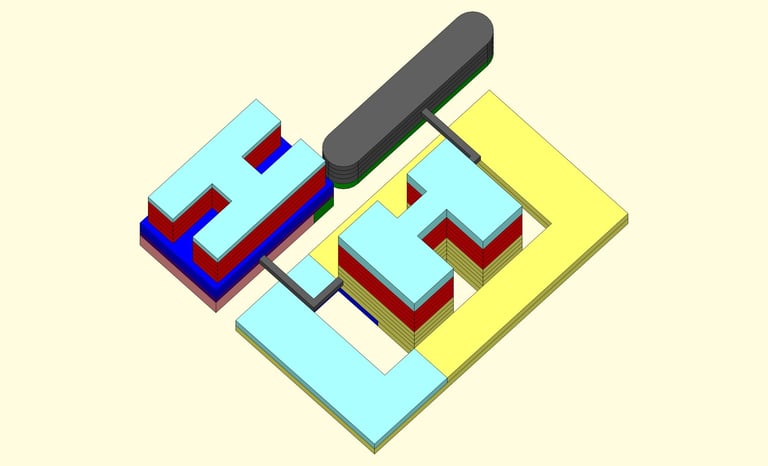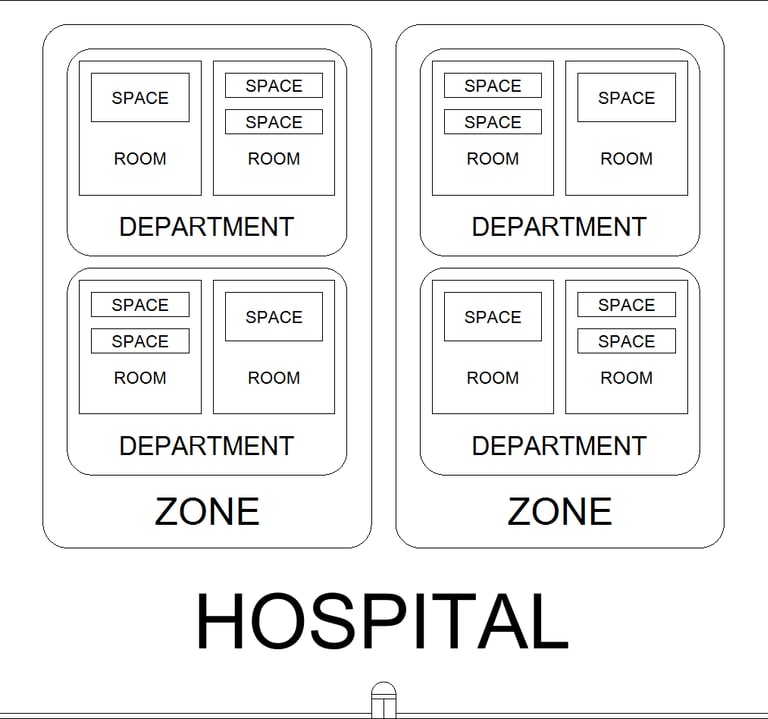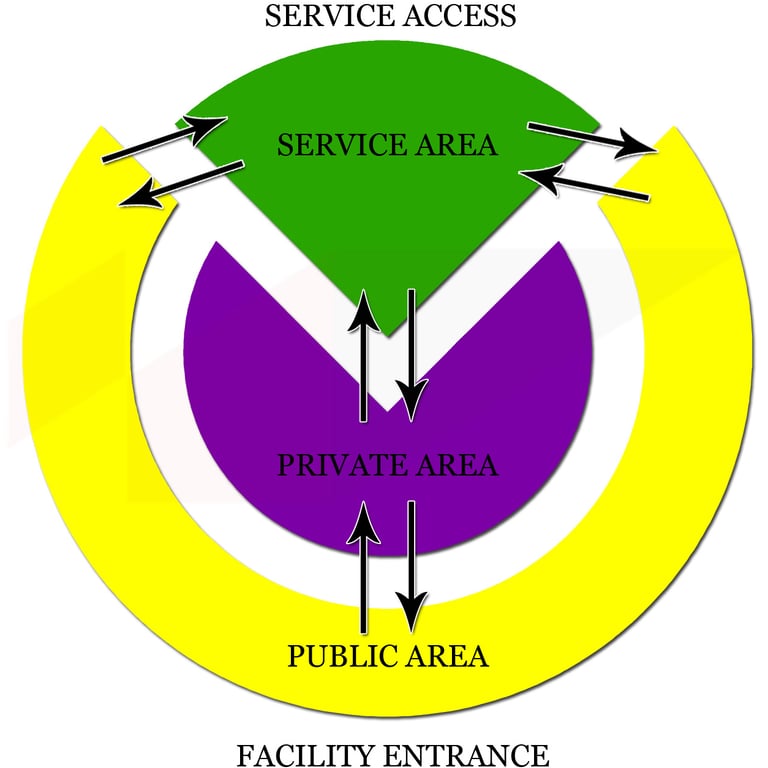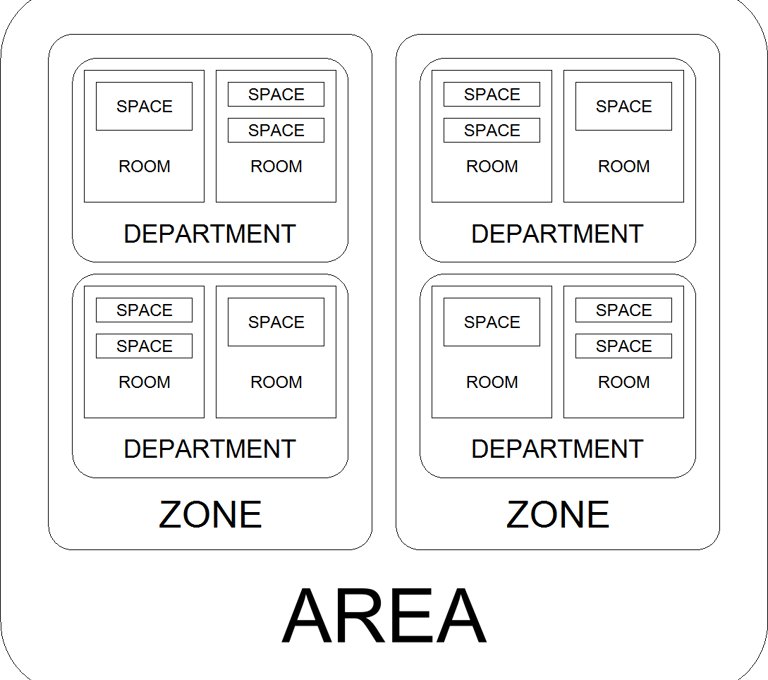Making Order Out of Chaos: Master Planning Healthcare Facilities, Part 1
Master planning helps map out the road to build the healthcare facility that answers to the needs of all the end-users. This post talks about site utilization in the master plan.
SPACE
Richard Lasam
3/6/20255 min read


I began working in 2008. I worked first as an Intern, then after becoming a licensed architect, a Project Coordinator. For the four years of my stay in the firm Luis & Associates, I learned from my mentors the ways of understanding the complexities of healthcare facilities by finding order inside the chaos of the sheer number of different activities and needs required to design such projects.
From the smallest clinics to the largest hospitals, Luis & Associates gave me the knowledge to begin to quantify and organize the way I direct the design process in my practice.
Designing healthcare facilities is a complex process that involves multiple variables of design intent and user needs. These variables are integrated by the architect and the people who will be using the space to create a well-designed development. Over the years of my practice, I've learned the best way to handle this type of challenge is to map out the details from a macro perspective to the smallest details, planning from the top so to speak by listing the needs of the project, preparing a master plan, then coordinating with the professionals who will implement the formulation of the architectural and engineering plans. This is a multi-level process that requires time and passion to absorb.
Site utilization
But for today, I want to focus on an aspect of master planning that I often use in healthcare facility design (but these concepts are applicable for other building types as well): site utilization. The process starts with assessing the spaces within the healthcare facility by their activity and proximity relationships to have efficient site utilization. As described in the publication of the World Health Organization called District Hospitals: Guidelines for Development (Chapter 3.3)
“The Hospital is a rational organization of spaces in hierarchical levels: the whole hospital consists of zones, which in turn consist of spaces (Fig. 18). The space is the smallest architectural unit in this hierarchy: here, people (patients, staff, the public, students) and goods (supplies, equipment and records) interact. Thus the design of the hospital must proceed in the same way—from the macro to the micro level, from the general to the specific, from the whole hospital to the space. The designer must envisage the whole hospital as the sum of all the parts…”


Fig 18. Organization of zone and spaces.
Site utilization is also part of the design ideas of having a Universal Design Language to make master planning easier to be understood by everyone involved in the process of building up a healthcare facility.
There are about four levels to this design process—from general items to specific details—which are:
1. Area. This is the broadest category composed of three sections: public, private, and service. As the name indicates, the spaces under each of these sections are based on the allowed access and operations of the people and materials within the healthcare facility. Everything in the healthcare facility falls into one of these three categories. At this stage, the architect begins the initial assessments of the master plan site utilization.
2. Zone. The next category after area, zones differentiate the departments of the healthcare facility in terms of the services provided and the necessary departments that should be adjacent to specific services. At this level, there are currently seven major zones: Common, Outer, Intermediate, Inner, Deep, Service, and Special Service. Within these zones are further sub-zones based on specific activities and usage.
3. Departments. These are places in a healthcare facility dedicated to a specific medical activity or operation. Examples would be the Emergency Department, Outpatient Department, Imaging Department, and so on.
4. Spaces. The smallest architectural unit, these are specific rooms within a department. Examples would be Doctors Office, Dialysis Treatment Areas, Operating Theater, and similar such components of a department.
Master Planning happens at the Area and Zone level, while Architectural Design is conducted at the Department and Space level. Anyhow, for this article we will focus on the broadest category, the first Level: The “Area” Level.
Area
All spaces in a healthcare facility will fall into these three area categories:
1. Public Area. These are the zones and departments that are in the perimeter of the healthcare facility. They conduct activities that require direct access from visitors and outpatients (i.e. patients who will not stay in the healthcare facility for treatment) and often has less stricter sterility protocols. The zones under this area are the Common Zone, Outer Zone, and Intermediate Zone (to be discussed in another article).
2. Private Area. Zones and departments that cater to inpatients (patients who will stay for more than 24 hours in a healthcare facility) and medical procedures of a more invasive and delicate nature are all under this Area. Sterility is often a significant consideration for the Private Area. Zones under this area are the Inner Zone and the Deep Zone. (Also to be discussed in other articles.)
3. Service Area. The “backbone” of the healthcare facility, all non-medical utilities, supplies, and operations necessary for the daily functionality of the whole building are categorized under this Area. Zones under this area are the Service Zone and Special Service Zone.
As shown in this graph, the three areas interact with each other in this way:


These three areas, as mentioned in this article, are further sub-divided into Zones, Departments, and Spaces based on the specific activities and access level being undertaken and allowed in the healthcare facility, which will be discussed in a future article. The relationship between the categories within a healthcare facility looks like this:


Designing healthcare facilities takes a lot of time, effort, patience and creativity—but it can be learned with enough effort and dedication on the part of the architect. If you want to know more about these topics, feel free to contact us via the Space & Care email listed below.
